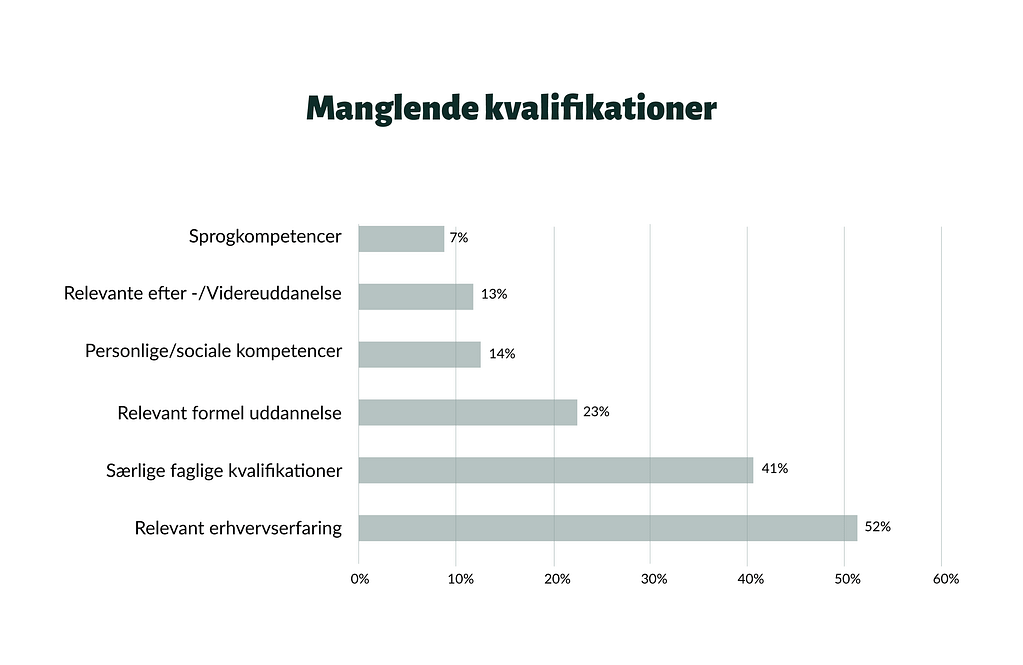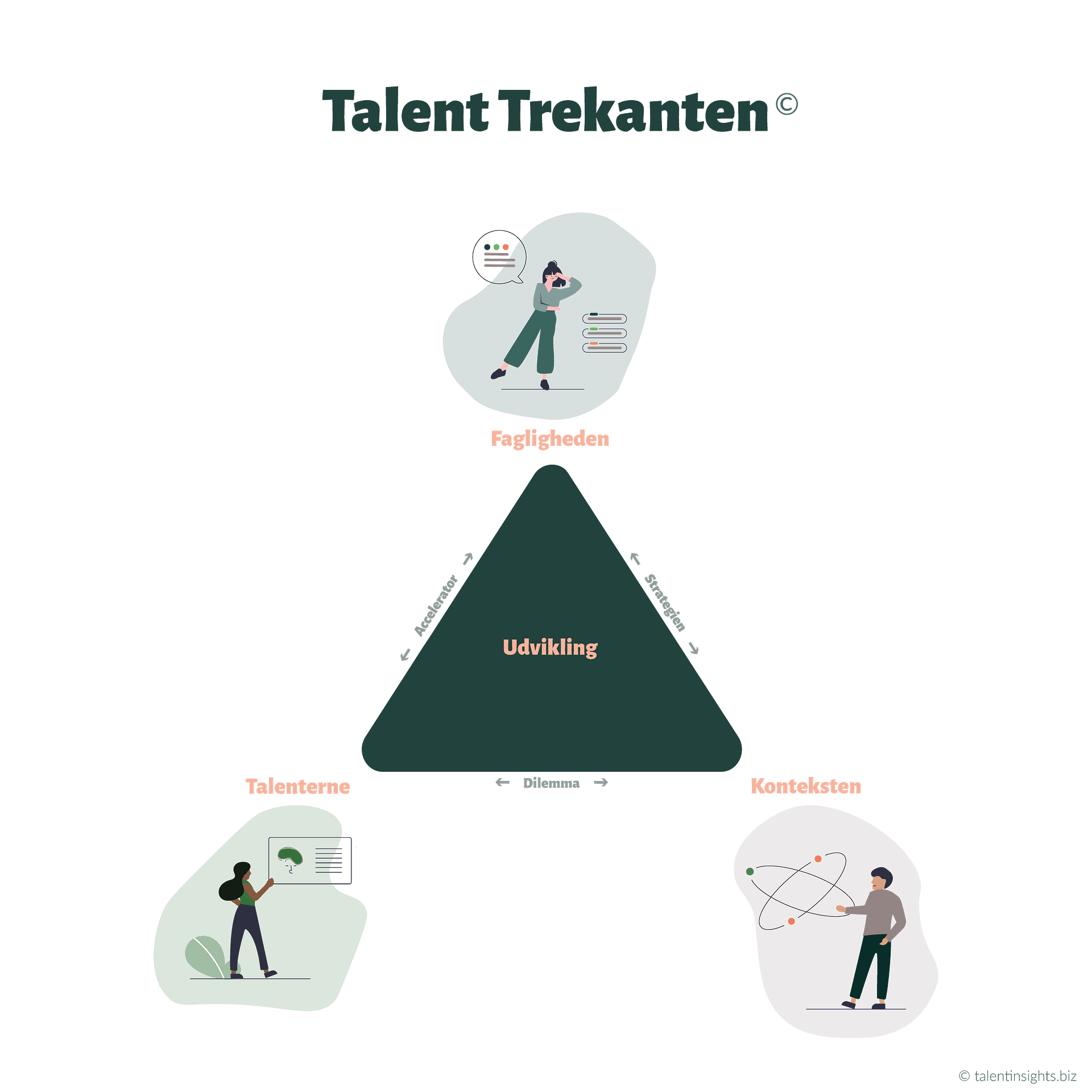

Bias in The recruiting process
Research is increasingly pointing towards our current methods not finding the best candidate for the job – but the exact opposite. Therefore we put focus on one of the biggest source errors – unconcious bias.
Are you in need of labor? Then unfortunately, you are not alone. The latest recruiting report from The Danish Agency for Labor Market and Recruitment (STAR), from march 2022 that covers the period june 2021 to november 2021, say that 158.000 posts weren’t occupied.
Per has 20 years of experience within management, sales and marketing in companies. Also works as Assistant Professor at CBS, and therefore have solid experience as talent development and developer.
divide
Multiple analysis’ show us that the competition for labor is one of the biggest challenges for danish companies and organizations. Just in the last half year in 2021, there has been 158.000 recruitments in vain, which is the highest amount since spring 2007.
33% of the companies’ recruiting attempts was in vain, 18% ended up with the position not being occupied (72.300), while 13% of the companies’ positions were occupied by a candidate, that did not have all the qualifications that were wished for.
The 54.300 people that got hired despite missing qualifications, fell into these categories:


Source: Rekrutteringssurver, March 2022, STAR
It is expensive and time consuming to recruit, so how can we think to increase the possibilities to reduce the 33% failed attempts?
Alot of research shows that the employees’ person-organization-fit is a significant factor to follow up on. More meta analysis’around engagement shows, that the employees’ with a high person-organization-fit have higher job satisfaction, higher organizational connection and lower likelyhood to quit.
Research around person-organization-fit shows that you as a leader need to think in these 3 aspects in order to attract relevant candidates.
Already makes it clear in the shaping of the job posting, what values the organization works with, and not least how you attack the problems in daily life. Are you for example project, team oriented or an individually driven organization? The relevant department, how is it to work there? Make sure during the hiring conversation to ask about what the person thinks themselves, and describe where there is a match and mis-match. Possibly think of some scenarios where the organizations values are brought into play, and ask the candidate to put words and action on the situations.
Can you recognize a strong person-organization fit?
The organization needs an employee that delves into details, has control over connections in the organization, sees a value in following pre decided standards and systems as a value package. What combination of talents is it that you are looking for to solve these tasks? Check your job description, if it only talks about whatneeds to be done, when you instead could describe what personal competencies/talents you want to be put into play, by the completion of the job.
Avoid talking past eachother – otherwise you are both wasting your time.
After this you need to establish a so called person-job-fit. Here you need interest in whether experience, capabilities, resources and competencies cover the needs that you have. You need to think broadly, you need to think about the assignments subject knowledge needed, the context in which it should be completed and finally the value that needs to be created. This fit also goes under the name demand-skill-fit.
Does the candidate for example have the needed drive to be able to handle customer inquiries the whole day? Does the candidate have the resilience needed to be able to handle the emotional demands in interactions between colleagues and customers?
If the capabilities the candidate shows for example are curiosity and immersion, do we then have a possibility to create room for both? If the candidate exhibits pronounced cooperation and team capabilities, can we then anchor that into our project organization?
The soft competencies are hard to uncover, unless you use personality tests that have this exact purpose. TalentIndicator is such a test where 34 capabilities are uncovered and are related to eachother. demand-skill-fit is exactly the match you are looking for between your demands to the jobs contribution and the approach to problem solving that the candidate brings with them. ”Hire for attitude – train for skill” is what we are looking for here.
Get a grip of person-job-fit, by thinking about:
*An recognized potential uncovering test is the TalentIndicator test, that you can read more abouthere.
Here we need to think of whether the candidates wishes and needs, in relation to the jobs content and possibilities are being met. Uncover how the candidate sees the job in it’s full function, what role is the job playing, how does it play into the rest of the organization, what career path has previous employees in the same job role followed, the development speed in the job – does it make sense for the candidate and similar considerations.
If the job is simple to define, or are we talking about a job that typically develops with the personality that performs the job? In the latter case the personal drive and motivation will create the foundation for a useful interview.
Essentially need-supply-fit consists of a wish to match the future possibilities in the best way possible. To create a high rate of employee engagement, the job is seen as a development process for both parties.
It is also here that the match between the jobs subject knowledge and the persons personality needs to be mapped. Is there a large rate of complementarity, or can we spot a significant leadership task?
When you have brought organization – person and needs into the candidates future job, it is easier to make the case for salary, career path, employee benefits, managerially independence, possibilities for working from home, possibilities for team and project work and the like.
For person-need it is attentive around the tasks, that the individual employee finds especially satisfying, professionally stimulating and personally giving to solve. Dependant on the character of the job, you shouldn’t reject the possibility to make a difference for people as a useful driving force.
A helping toolto get a hang of the 3 perspectives is thepopularTalent Triangle . Here you have a model that helps you with getting the hang of the 3 individual subjects, and then at the same time create an overview over how they impact eachother and are dependant on eachother.



The development between the context – your company/your management/your employees; and the subject knowledge that already is in the organization and the one that is added with the new candidate(s). This is #tagged as the strategy in the company. Is the subject knowledge and the context in sync with the strategy for the actual job for the candidate or the organization as such? Are there any gaps, any wrong skills or some wrong structures? Yes these are difficult questions, but relevant in order to help the new candidate on their way.
The connection between the context and the talents is where the new candidates thought patterns, skills, qualifications and competencies meet the organizations – How do they match?
The last dynamic is whether we can use it for the new candidates talent mass to put turbo on the skills that we are striving for? Can we create an engagement around the person, so that use of the talent mass will have a contagieous effect on the other talents in the organization?
When you think the Talent Triangle in connection with the 3 directions and the 3 dillemma’s you will already have increased your possibilities for attracting the right candidates to both of your benefits.
Have fun with your recruiting of your next talents.
divide


Research is increasingly pointing towards our current methods not finding the best candidate for the job – but the exact opposite. Therefore we put focus on one of the biggest source errors – unconcious bias.


Are you in doubt as to whether you are getting the desired benefit of your potential, then read along here. It gives you a language so that you can explain to others what your competencies are best used for.


Can you afford to exclude talented organizational development? You can probably rightly claim that organizational development has existed ever since humans started organizing themselves in
Mandag – Torsdag
09:00 – 17:00
Fredag
09:00 – 16:00
0045 2240 8052